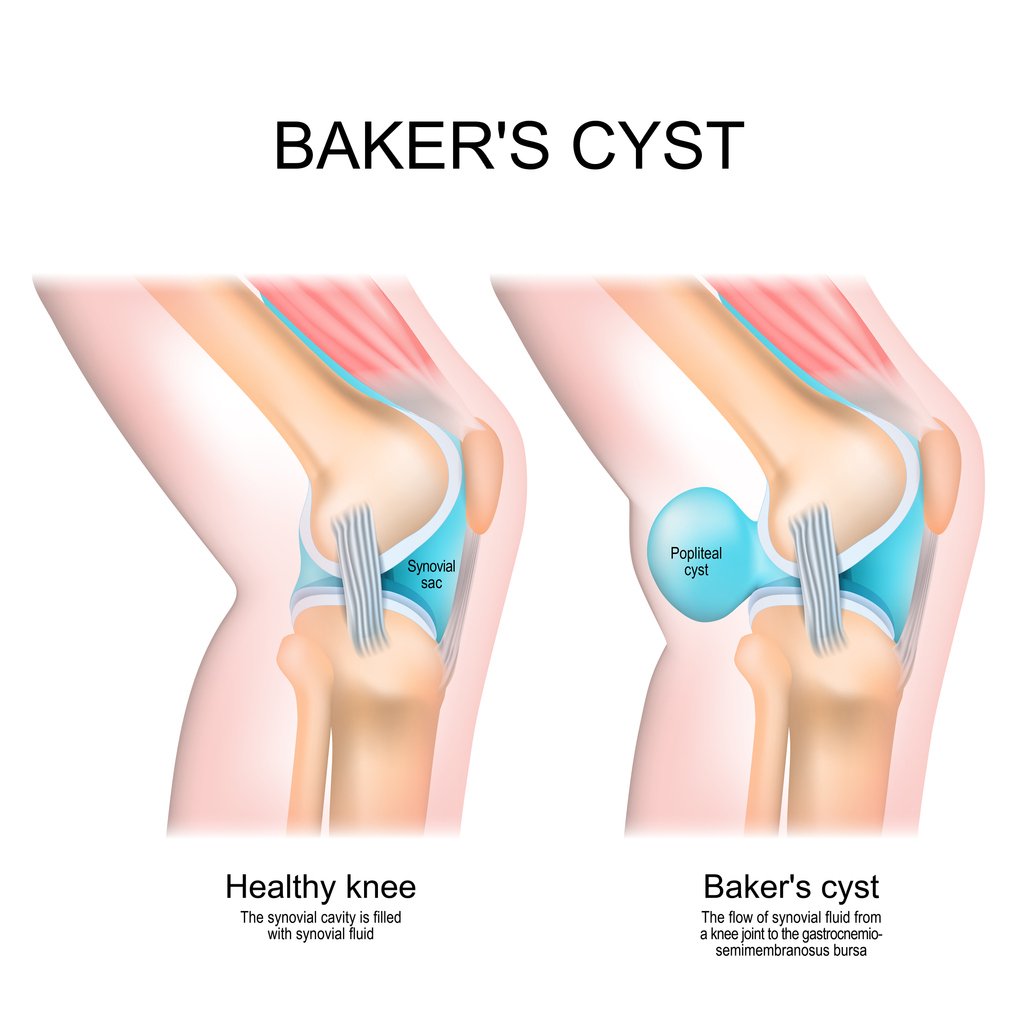If this is the first you are hearing of Baker’s Cyst, you’re not alone. And the reason we are discussing it here, in our vascular practice, is because if this type of cyst ruptures the result is a painful, swollen leg, which at first glance may be indistinguishable from an acute deep vein thrombosis (DVT).
What is a Baker’s Cyst?
Cysts, in general, are sac-like structures typically filled with a liquid, semi-solid substance, or even a gaseous material. They can vary in size and location and are mostly benign.
A Baker’s Cyst, also called a popliteal cyst, forms at the back of your knee and causes a protruding bulge under the skin and a feeling of tightness in the knee. They typically occur from an injury to the area or inflammation in the knee joint. The cyst forms when too much lubricating fluid in the knee, known as synovial fluid, builds up in the back area of your knee.
Is Baker’s Cyst Dangerous?
Usually, cysts are not dangerous and can be treated with ice and over-the-counter medications. If a Baker’s Cyst bursts open, it can cause similar issues like those you may experience with a DVT. The symptoms can go from leg swelling and pain to redness and warmth in the area.
How to Tell the Difference Between DVT and a Baker’s Cyst
If your doctor is a board-certified vascular surgeon, then they should know to take the examination a bit further. Beyond asking some of the upfront questions and performing tests like checking the knee’s flexibility and understanding the issues that led to the current pain, there are some additional ways familiar to a vascular doctor to ascertain more information so you can know if it’s DVT or a cyst.
These tests could involve an ultrasound to get a picture of the inside of your leg that looks for blood clots to a deeper look through an MRI that offers an even more detailed picture of the leg. While MRI’s are not typically used for diagnosing DVT, it can certainly determine if there is a cyst causing the problem.
What Are My Treatment Options?
Depending on what the diagnosis shows, your treatment will vary. If you have a Baker’s Cyst, you could get a corticosteroid shot to reduce the swelling and alleviate the pain. Aspirating the cyst to drain any fluid is also an option. These procedures are typically performed by several types of doctors including primary care physicians, orthopedic surgeons, or physiatrists.
If you are experiencing any signs of DVT or notice a bulging behind your knee and would like to learn more about risk factors and prevention, schedule an appointment with one of our vein treatment specialists who can discuss your situation with the knowledge to determine your best course of action.








.jpg?width=944&name=Castle-Connolly-Top-Doctors-Emblem-Large%20(4).jpg)